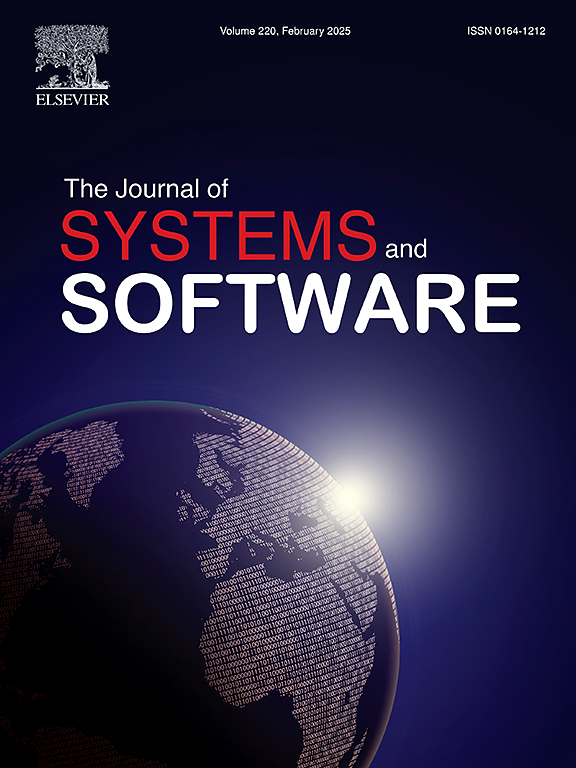Analysing Self-Adaptive Systems as Software Product Lines
IF 3.7
2区 计算机科学
Q1 COMPUTER SCIENCE, SOFTWARE ENGINEERING
引用次数: 0
Abstract
Self-adaptation is a crucial feature of autonomous systems that must cope with uncertainties in, e.g., their environment and their internal state. Self-adaptive systems (SASs) can be realised as two-layered systems, introducing a separation of concerns between the domain-specific functionalities of the system (the managed subsystem) and the adaptation logic (the managing subsystem), i.e., introducing an external feedback loop for managing adaptation in the system. We present an approach to model SASs as dynamic software product lines (SPLs) and leverage existing approaches to SPL-based analysis for the analysis of SASs. To do so, the functionalities of the SAS are modelled in a feature model, capturing the SAS’s variability. This allows us to model the managed subsystem of the SAS as a family of systems, where each family member corresponds to a valid feature configuration of the SAS. Thus, the managed subsystem of an SAS is modelled as an SPL model; more precisely, a probabilistic featured transition system. The managing subsystem of an SAS is modelled as a control layer capable of dynamically switching between these valid configurations, depending on both environmental and internal conditions. We demonstrate the approach on a small-scale evaluation of a self-adaptive autonomous underwater vehicle used for pipeline inspection, which we model and analyse with the feature-aware probabilistic model checker ProFeat. The approach allows us to analyse probabilistic reward and safety properties for the SAS, as well as the correctness of its adaptation logic.
求助全文
约1分钟内获得全文
求助全文
来源期刊

Journal of Systems and Software
工程技术-计算机:理论方法
CiteScore
8.60
自引率
5.70%
发文量
193
审稿时长
16 weeks
期刊介绍:
The Journal of Systems and Software publishes papers covering all aspects of software engineering and related hardware-software-systems issues. All articles should include a validation of the idea presented, e.g. through case studies, experiments, or systematic comparisons with other approaches already in practice. Topics of interest include, but are not limited to:
•Methods and tools for, and empirical studies on, software requirements, design, architecture, verification and validation, maintenance and evolution
•Agile, model-driven, service-oriented, open source and global software development
•Approaches for mobile, multiprocessing, real-time, distributed, cloud-based, dependable and virtualized systems
•Human factors and management concerns of software development
•Data management and big data issues of software systems
•Metrics and evaluation, data mining of software development resources
•Business and economic aspects of software development processes
The journal welcomes state-of-the-art surveys and reports of practical experience for all of these topics.
 求助内容:
求助内容: 应助结果提醒方式:
应助结果提醒方式:


